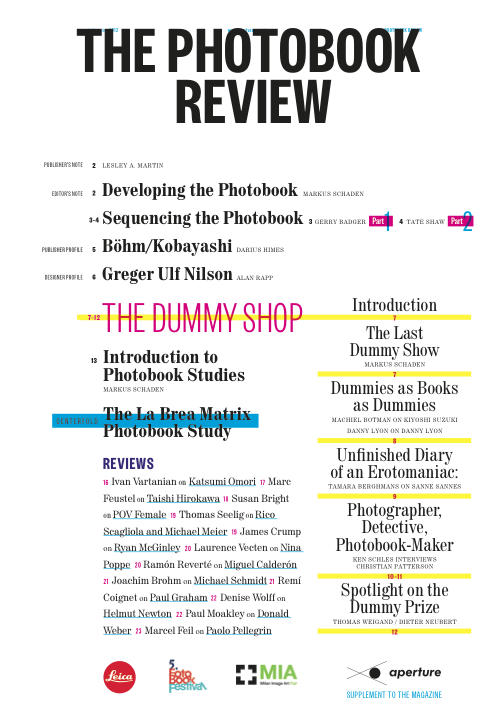Review of Taishi Hirokawa, Still Crazy
The PhotoBook Review, Issue 002, Spring 2012
Since the atomic bombings of Hiroshima and Nagasaki in August 1945, the nuclear issue has cast a long shadow in Japanese photography. In the immediate postwar years, many photographers were compelled to bear witness to the devastation caused by the blasts with projects documenting the resulting human and material destruction. As time passed, the importance of the atomic bombings as a theme did not fade, if anything it grew even further. In the 1960s, projects such as Kikuji Kawada's Chizu (The Map, Bijutsu Shuppan-sha, 1965) and Shomei Tomatsu's 11:02 Nagasaki (Shashin Dojinsha, 1966) took a more indirect look at the bombings. These projects went beyond a straightforward documentation of the consequences of the atomic blasts, providing a more subjective interpretation of the scars, both mental and physical, that they left behind. As nuclear power plants were developed in Japan from the late 1960s, photographers began to explore the dangers of the peaceful use of nuclear energy with projects such as Taishi Hirokawa's Still Crazy.
With the tsunami of March 11, 2011 and the ensuing disaster at the Fukushima nuclear plant, the fears presaged in Hirokawa's Still Crazy have become all to real and the nuclear issue is once again returning to center stage. It is in this context that Still Crazy has been re-released in digital form as an app. While the app is not much more than a gallery of the images included in the book, the texts have been updated to include the current status of the sites depicted in 1994, as well as a text (dated 1998), in which the author states “Future prosperity, which is often strongly tied to nuclear power generation, has been achieved at a huge cost and future generations may pay the price while being forced to clean up the mess their predecessors left behind.” Following the events at Fukushima Daiichi, the original book, a photographic study of Japan's nuclear power infrastructure, has acquired an additional layer of meaning.
Taishi Hirokawa, Shikoku Electric Power Co., Inc., Ikata, from the series Still Crazy: Nuclear Power Plants as Seen in Japanese Landscapes
The book is made up of a series of landscape photographs depicting the vast nuclear infrastructure that has been developed across the country since the first plant opened in 1966. Despite being the only country to have suffered the effects of the atom bomb, Japan's need to import over 80% of its energy requirements has led it to become heavily dependent on nuclear energy (30% of current electricity production). Hirokawa's images, shot with a large format (8x10") camera, show the different nuclear installations dotted around the country's coastline within the context of their surrounding landscape. The images are presented as full bleed double spreads, making the photographs as large and detailed as possible. Despite their scale, the effect is descriptive rather than dramatic, as suggested by the book's quasi-scientific subtitle Japan's 16 Nuclear Power Plants and 53 Nuclear Reactors and Planned NPP Construction Sites. This descriptiveness is compounded by the neutrality of the murky black-and-white of the plates: Hirokawa does not seem concerned with presenting a typology of nuclear infrastructure in the manner of the Bechers' post-industrial studies. Instead his photographs simply recognize the existence of these vast structures in the natural landscape. The compositions focus not only on the power plants themselves, but show how they integrate into their surrounding landscape. Neighboring villages, mountains, fields and beaches appear, sometimes in the background, dwarfed by these immense structures, sometimes in the foreground with the nuclear sites lurking in the distance. Although, Hirokawa does not use visual effects to emphasize the menace of nuclear power, the overall effect is foreboding, the images combining to suggest the potential damage that could occur in the event of a disaster.
Still Crazy closes with a double spread showing two maps of Japan: on the left-hand page a map of the existing nuclear plants is displayed, whereas on the facing page a map shows the significant planned growth of nuclear power with no less than 19 locations to be developed. (The app version includes both 1994 maps and an updated one from 2011 as well). Despite the neutrality of his photographic approach, Hirokawa clearly articulates his stance to the growth of Japan's reliance on nuclear energy in the book's title, embossed in a thick, bold font running across the entire cover. In the aftermath of Fukushima, this exclamation seems more adamant than ever.
By Marc Feustel

